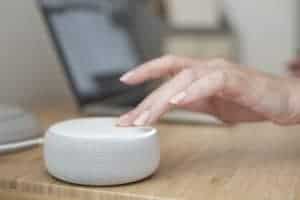Have you recently invested in a smart thermostat and are now looking to integrate it into your smart home system? Connecting your smart thermostat to your smart home system can bring you added convenience, energy savings, and peace of mind. However, it’s crucial to ensure that the process is carried out correctly to prevent any potential issues or security risks. In this step-by-step guide, we will walk you through the process of connecting your smart thermostat to your smart home system in a safe and effective manner, so that you can fully enjoy the benefits of a seamlessly connected home environment. From choosing compatible devices to setting up the connection, we’ve got you covered.
Key Takeaways:
- Compatibility is key: Before connecting your smart thermostat to your smart home system, make sure they are compatible with each other. Check the thermostat’s compatibility with the specific smart home system you have in place.
- Follow manufacturer’s instructions: Each smart thermostat and smart home system might have their own set of instructions for the connection process. Make sure to carefully follow the manufacturer’s guidelines to avoid any errors.
- Use a dedicated app: Many smart thermostats come with their own dedicated app for connection to smart home systems. Utilise the app to seamlessly integrate your thermostat with your home system for easy control and monitoring.
- Consider professional installation: If you’re unsure about the technicalities of connecting your smart thermostat to your smart home system, it’s best to seek professional installation services to ensure a smooth and secure connection.
- Utilise smart home automation: Once your smart thermostat is successfully connected to your smart home system, take advantage of smart home automation features to customise temperature settings, schedules, and energy-saving modes for maximum efficiency and comfort.
Preparing for Installation
Before you start connecting your smart thermostat to your smart home system, there are a few things you need to consider and prepare. Taking the time to do this will ensure a smooth and successful installation process.
Factors to Consider Before Connecting Your Devices
Before you start connecting your smart thermostat to your smart home system, there are a few factors you should consider. Firstly, check if your current HVAC system is compatible with a smart thermostat. Some older systems may not be compatible, so it’s important to check this before making any purchases. Secondly, assess the Wi-Fi signal strength in the area where your thermostat will be installed. A weak signal can cause connectivity issues, so it’s essential to have a strong and reliable Wi-Fi connection. Lastly, consider the compatibility of your smart thermostat with other smart devices in your home, such as smart locks or lighting systems. Knowing these factors will help you determine if a smart thermostat is the right choice for your home.
Tips for Choosing the Right Smart Thermostat
When choosing a smart thermostat, there are a few important factors to consider. Look for a thermostat that is compatible with your HVAC system and has the features you need, such as remote access and energy-saving capabilities. Consider the design and interface of the thermostat, as well as any additional sensors or accessories that may be useful. After taking these tips into account, you can make an informed decision on the right smart thermostat for your home.
The Connection Process
Once you have a smart thermostat and a smart home system, connecting them is the next step to maximising the efficiency and convenience of your home. The good news is that the process is relatively straightforward and can typically be completed in just a few steps.
Step-by-Step Guide to Connect Your Smart Thermostat
To connect your smart thermostat to your smart home system, you will need to follow a few simple steps:
Step 1: Check Compatibility
Before you begin the process, it’s important to ensure that your smart thermostat is compatible with your smart home system. You can usually find this information in the product manual or on the manufacturer’s website.
Step 2: Download the App
Most smart thermostats require you to download a dedicated app to your smartphone or tablet. This app will allow you to control your thermostat remotely and integrate it with your smart home system.
Step 3: Follow the Setup Instructions
Once you have the app installed, follow the setup instructions provided by the manufacturer. This will typically involve creating an account, connecting your thermostat to your Wi-Fi network, and pairing it with your smart home system.
Troubleshooting Common Connection Issues
If you encounter any issues during the connection process, there are a few common troubleshooting steps you can try:
Ensure Proper Wi-Fi Connection
Check that your Wi-Fi network is working properly and that your smart thermostat is within range.
Restart Your Devices
Sometimes a simple restart of your smart thermostat, router, or smart home system can resolve connectivity issues.
Check for Firmware Updates
Be sure to check for any available firmware updates for your smart thermostat or smart home system. Updating to the latest software can often resolve compatibility and connectivity issues.
By following these steps and troubleshooting any issues as they arise, you should be able to successfully connect your smart thermostat to your smart home system. This will allow you to enjoy the convenience of controlling your home’s temperature and energy usage from anywhere, as well as integrating your thermostat with other smart devices in your home.
Integration and Compatibility
When it comes to connecting your smart thermostat to your smart home system, it’s important to ensure seamless integration and compatibility with other devices. This will not only enhance your user experience but also maximise the energy efficiency of your home.
How-to Ensure Seamless Integration with Other Smart Devices
One of the key aspects of connecting your smart thermostat to your smart home system is ensuring seamless integration with other smart devices. Before making a purchase, it’s crucial to check the compatibility of your smart thermostat with the existing smart devices in your home. This includes smart speakers, lighting systems, and security cameras. Compatibility issues can result in malfunctions and disruptions in your smart home setup. Therefore, always double-check compatibility and integration capabilities before making any commitments to a specific smart thermostat.
Maximizing Energy Efficiency Through Correct Setup
Maximising energy efficiency is one of the main benefits of integrating your smart thermostat with your smart home system. By ensuring correct setup and integration, you can benefit from features such as remote temperature control, scheduling, and energy-usage tracking. This can help you save on energy bills and reduce your environmental footprint. Furthermore, the ability to integrate your smart thermostat with other energy-efficient smart devices, such as smart lights and smart blinds, can further enhance your home’s energy efficiency. By using these features and integrating your smart thermostat effectively, you can significantly reduce your energy consumption.
Advanced Tips and Tricks
Now that you have successfully connected your smart thermostat to your smart home system, it’s time to explore some advanced tips and tricks to truly maximise its potential. Let’s take a look at some innovative ways to enhance your smart home experience.
- Customising Your Smart Thermostat Settings for Optimal Performance
- Integrating Voice Commands with Your Smart Home
- Maximising Energy Efficiency with Advanced Features
- Utilising Geofencing Technology for Automated Adjustment
Customising Your Smart Thermostat Settings for Optimal Performance
When it comes to getting the most out of your smart thermostat, customising the settings for optimal performance is key. By fine-tuning the temperature, schedule, and preferences, you can ensure that your home is always at the perfect comfort level while maximising energy efficiency. Whether it’s creating specific temperature zones or adjusting the fan settings, taking the time to customise your smart thermostat will pay off in the long run. You can also make use of features like adaptive recovery and early-on to ensure your home is at the desired temperature at the right time, saving you both time and money in the process.
Integrating Voice Commands with Your Smart Home
One of the most convenient aspects of a smart home system is the ability to control various devices, including your smart thermostat, using voice commands. By integrating your smart thermostat with a virtual assistant like Amazon Alexa or Google Assistant, you can effortlessly adjust the temperature, set schedules, and even receive status updates—all with simple voice commands. This not only adds a level of convenience to your daily routine but also allows for hands-free control, perfect for when your hands are full or you simply don’t want to get up from the comfort of your sofa. Just imagine walking into your home and saying, “Hey Google, set the living room temperature to 21 degrees,” and having it instantly done for you, without lifting a finger.
Summing up How to Connect Your Smart Thermostat to Your Smart Home System
By following these simple steps, you can easily connect your smart thermostat to your smart home system and begin enjoying the convenience and energy savings that come with it. Remember to ensure compatibility between your devices, follow the manufacturer’s instructions, and utilise the appropriate smart home app to complete the setup. Once connected, you will have the ability to control your home’s temperature remotely, create customised schedules, and integrate your thermostat with other smart devices in your home. Embracing smart home technology can greatly improve your quality of life and reduce your energy consumption, so don’t hesitate to take advantage of the benefits that come with a connected smart home system.
FAQ
Q: Why should I connect my smart thermostat to my smart home system?
A: Connecting your smart thermostat to your smart home system allows for greater control and automation of your home’s heating and cooling, leading to energy savings and enhanced comfort.
Q: Which smart home systems are compatible with smart thermostats?
A: Most smart thermostats are compatible with popular smart home systems such as Amazon Alexa, Google Home, and Apple HomeKit, as well as many others. It is important to check the compatibility of your specific smart thermostat with your chosen smart home system.
Q: What steps are involved in connecting a smart thermostat to a smart home system?
A: The first step is to ensure that your smart thermostat is compatible with your smart home system. Next, you will need to download the corresponding app for your smart thermostat and follow the instructions for connecting it to your smart home system. This typically involves linking the devices through the app and setting up any necessary permissions.
Q: Can I control my smart thermostat remotely through my smart home system?
A: Yes, once your smart thermostat is connected to your smart home system, you will be able to control it remotely through the corresponding app on your smartphone or other devices. This allows you to adjust the temperature and settings from anywhere with an internet connection.
Q: Are there any potential issues or drawbacks to connecting a smart thermostat to a smart home system?
A: While there are many benefits to connecting your smart thermostat to your smart home system, potential issues could arise from compatibility issues, technical glitches, or connectivity problems. It is important to thoroughly research and understand the compatibility and functionality of the devices before attempting to connect them.








